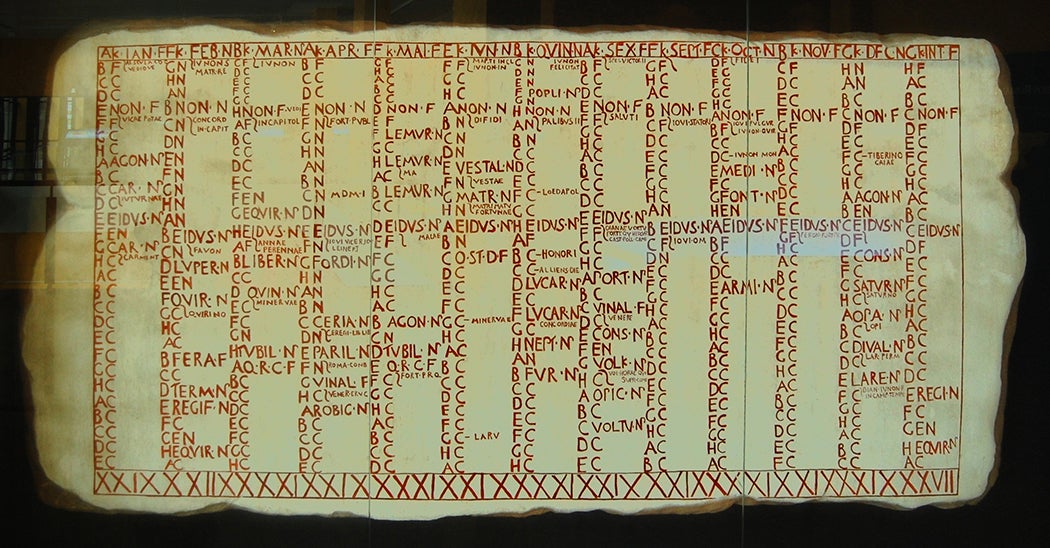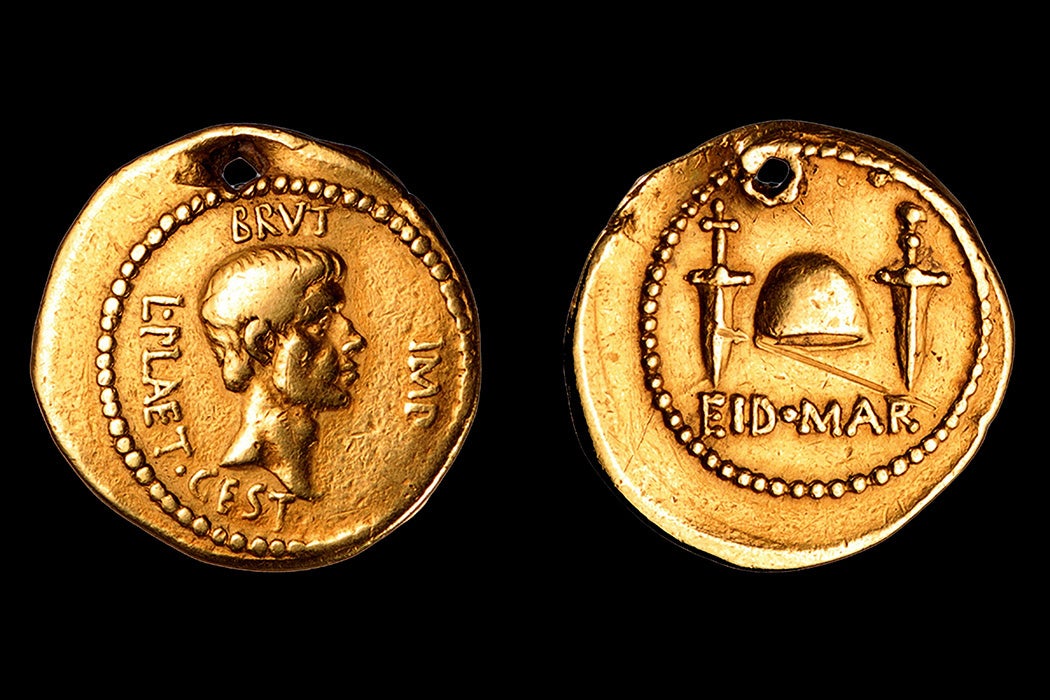On this day in 44 BCE, Dictator for Life Gaius Julius Caesar was assassinated by members of the Roman Senate, stabbed 23 times in what the conspirators believed was an act that would save the Republic and stop Caesar’s advancement toward becoming the King of Rome. This day, on the Roman calendar of the time, was the Ides of March. What does “Ides” mean? Why that day? And what was the Julian Calendar all about, anyway?
Up until the year before Caesar’s death, the Roman calendar was a bit of a disaster, at least if you were trying to use it for things like “what season is it,” “when do I plant my wheat,” or “when should the pigs be suckled”? These examples may seem simplistic, but it’s important to remember that the Roman Republic was at its heart an agrarian society: when soldiers retired, they were given farmland to work. Cincinnatus, a legendary elder statesman and hero of the Republic, would serve as needed in times of military warfare and plebeian uprisings, but would always return to his farm, inspiring George Washington and other Revolutionary War figures to idealize an agrarian United States.

The origins and underlying logic of the early Roman calendar are a bit murky: legend is that Romulus, the founder of Rome, created a lunar calendar based on observation of the moon’s phases. A later innovation imposed a 9 day week (where the last day of the week was also the first day of the next week, because Romans loved counting things inclusively), and 10 months of 30 or 31 days each. It appears that the winter was just…ignored, which may seem baffling to us, but for a culture whose primary functions were farming, and later military campaigns, it may well have made sense. (This later calendar was also retroactively attributed to Romulus.)
By the time Julius Caesar began his political career, the calendar had undergone enough changes that it begins to resemble our own: 12 months of either 31 or 29 days on a four year cycle, with a month added in years 2 and 4, and February being either 28, 23, or 24 days. It was this calendar that controlled the economic, religious, and civic life of the Republic, and each day had a status attached to it: whether it was permissible or prohibited to bring cases to court, or conduct government business.
One consistency in the calendars was how days were counted: 3 “landmark” days were present in each month: the kalends (the first), the nones (the 9th day of the month, inclusive, which was really the 5th or 7th day depending on whether you had 29 or 31 days in that month), and the ides (the 15th or 13th day, inclusive.) These were believed to have been based on the original lunar calendar.
If anyone was truly familiar with the messiness of the Roman calendar, it was Julius Caesar. As the high priest (pontifex maximus) of Rome since 63 BCE, he was well acquainted with the hodgepodge of a calendar based on the sun and the moon, and requiring the intercalation of days and months to get it back in line every few years. He also knew well that the religious life of the Republic required that any major reforms not disrupt the schedules of festivals and sacrifices. Because religion and state were in design and practice the same entity, interfering with rituals and/or displeasing the gods would bring nothing but disfavor to the people of Rome.
Having won the recent Civil War against Pompey and seemingly unchallenged, Caesar made the needed changes. To avoid the wrath of the gods, and get the new calendar to sync up with the seasons, he extended the year 46 BCE to 445 days, which became known as the “last year of confusion.” On January 1, 45 BCE the Julian calendar became the standard for the Republic, the Empire and much of the West until Pope Gregory’s tweaking of leap years in 1562.
While it’s commonly believed that the date of Caesar’s assassination was one chosen based on expediency and proximity—he would be leaving three days later for a potentially long military campaign against Parthia, and the Senate would meet on the Ides, thus putting Caesar within reach of the conspirators—one scholar argues that the date was also one that held symbolic meaning for Brutus, Cassius and the other assassins, and that the calendar reform may have been a “last straw” for them, symbolizing the rejection of the sacred traditions of Rome, the mos maiorum, not unlike if a US president were to sit during the National Anthem.
The first day of civil year in the old Roman calendar was, yes, the Ides of March. C.J. Simpson writes that the Julian reform of the calendar didn’t just make Roman officials lives difficult in 46 BCE (see: the 445 day year), but also curtailed the power of the rex sacrorum, a lifetime official who was responsible for keeping track of festivals, making sacrifices and announcing when the next month would begin. It was more ceremonial than anything, but held prestige among the patricians who were eligible to hold it. However, with the dates of months and festivals now fixed, the role of this office would be much reduced.
Weekly Newsletter
The evidence Simpson points to for his argument seems a bit thin: a coin minted for Brutus, one of the main conspirators, commemorates the assassination, with two daggers, a “cap of liberty”, and the words “EID MAR” (Ides of March.) Argues the author, “no other Roman coin before or after this issue actually celebrated the date of a murder[…]the legend EID MAR stood not merely as a memorial of the bloody deed, but also, by referring to the erstwhile beginning of the Roman civil year, the conspirators’ hoped-for restoration of the former republican ways.”
Brutus’ role in the conspiracy against an authoritarian dictator perhaps reaching for monarchy feels almost predestined. His ancestor (at least in legend) Lucius Junius Brutus had expelled the last king of Rome, Tarquinius Superbus, after the rape of Lucretia and went on to found the Roman Republic. Another ancestor, Gaius Servilius Ahala, killed Spurius Maelius, who was thought to be plotting an uprising in order to become king in 439 BC. But when Cicero wrote to him about the conspiracy in its aftermath, Brutus seems to have learned the hard way: “Murder[…] makes trouble. It does not cure it.”







